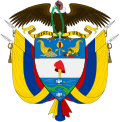| This article is part of a series on the |
| Politics of Colombia |
|---|
 |
Parliamentary elections were held in Colombia on 13 March 1994 to elect the Senate and Chamber of Representatives. [1] The result was a victory for the Liberal Party, which won 88 of the 163 seats in the Chamber and 56 of the 102 seats in the Senate.